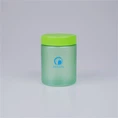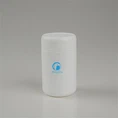A tamper-resistant container is designed to show clear evidence if someone has tried to open, alter, or contaminate the product before purchase. In other words, it helps protect consumers from product tampering - any attempt to interfere with the contents after manufacturing.
This type of packaging doesn't necessarily prevent tampering 100%, but it makes it noticeable and difficult enough that both retailers and consumers can easily identify a compromised product.
Common tamper-resistant features include:
Shrink bands or shrink sleeves around the cap or lid
Induction seals or foil liners that must be peeled off before use
Breakable caps or safety rings that detach when first opened
Pressure-sensitive seals applied inside the cap that adhere firmly to the bottle mouth
Each of these mechanisms ensures that once the product is opened, it cannot be resealed in its original condition without visible signs of interference.
Why Tamper Resistance Matters
Tamper-resistant packaging became an industry standard after a few high-profile incidents in the 1980s, which highlighted the risks of unsealed consumer goods. Today, it's a legal requirement for many product categories - especially in food, pharmaceuticals, and health supplements.
Here's why it's important:
Consumer Safety – Prevents contamination or substitution.
Brand Trust – A customer who feels safe is a customer who returns.
Regulatory Compliance – Meets FDA, ISO, and HACCP safety requirements.
Product Integrity – Keeps freshness, flavor, and formula stable.
In e-commerce and global logistics, tamper-resistant designs also protect against damage and unauthorized access during transport.
Types of Tamper-Resistant Containers
Depending on the product type, manufacturers use different solutions:
PET or HDPE bottles with induction-sealed foils – Common in food and supplement packaging.
PP safety caps with breakaway rings – Often used for medicines or syrups.
LDPE tear-off caps – Used for sauces or oils.
Multi-layer composite closures – Provide both airtight sealing and visual tamper evidence.
At Hubei Mingda Plastics Products Co., Ltd., we integrate these solutions directly into our manufacturing process. Our packaging - from PET bottles to HDPE jars - can be paired with tamper-evident caps, pressure-sensitive seals, or induction aluminum foils, ensuring full protection from production to shelf.
The Balance Between Safety and Usability
A good tamper-resistant design not only protects the product but also keeps the user experience simple. Customers should be able to open the container easily, yet see clear signs if it has been opened before. This balance is where experienced packaging manufacturers make a difference - understanding both safety regulations and consumer behavior.
Final Thoughts
Tamper-resistant containers are more than a trend; they are a global standard for consumer protection and brand credibility. Whether it's food, supplements, or pharmaceuticals, having the right packaging solution means safeguarding trust - one seal at a time.
















